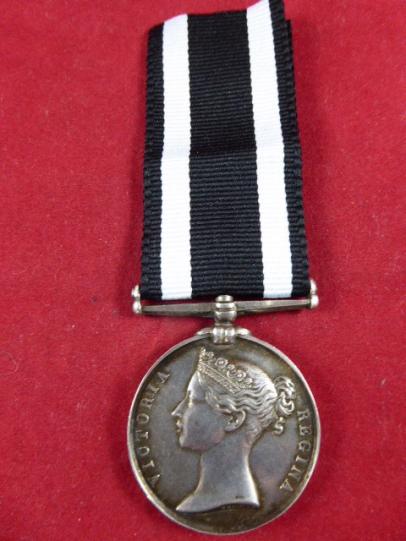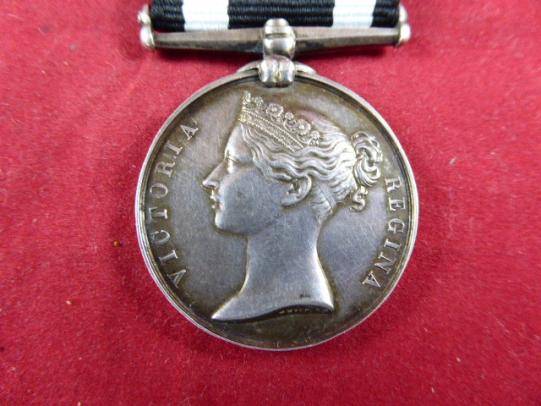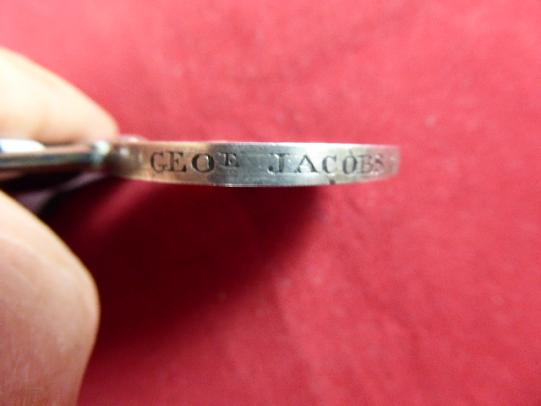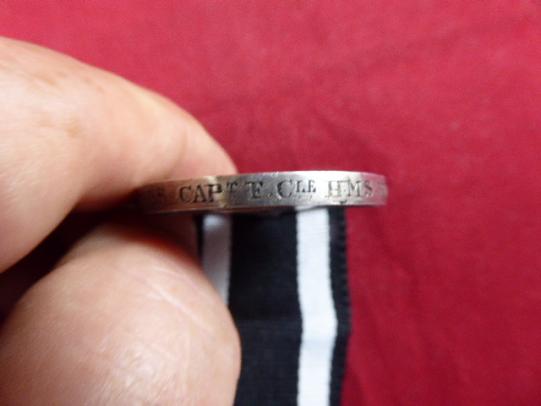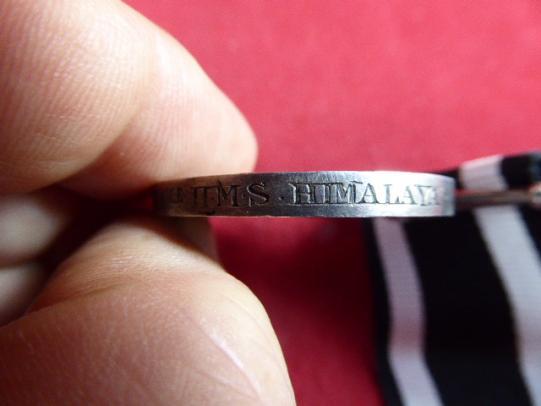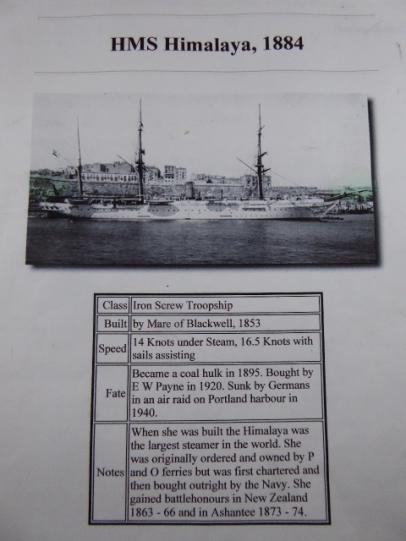Victorian Long Service and Good Conduct Medal to George Jacobs a Petty Officer serving as Captain of The Forecastle on H.M.S. HIMALAYA
Here on offer is an excellent example of a genuine Queen Victoria Royal Navy Long Service and Good Conduct medal awarded to George Jacobs, a Petty Officer serving as a Captain of the Forecastle on H.M.S. HIMALAYA.
The edge is engraved with the following details:
GEOe JACOBS CAPt F. Cle H.M.S. HIMALAYA
The medal itself is in excellent condition and retains a aged patina finish to the silver, which could be cleaned to a bright finish, if so required. (Please see my photos)
This example has the narrow suspender bar (37mm) and has a new ribbon as it didn’t have one when I acquired it.
The following are some details of the interesting history of the ship.
HIMALAYA was ordered by the Peninsular and Oriental Steam Navigation Company and laid down at the yard of C. J. Mare & Co. Leamouth, London in November 1851 as an iron paddle steamer, half as large again as any of P&O's previous vessels.
With rising coal prices, paddle propulsion was too inefficient and she was altered to a screw vessel while still on the stocks, she was fitted with a two-cylinder simple expansion horizontal trunk engine made by John Penn & Sons at Greenwich of 700 nhp or 2,050 ihp, with a single two-bladed propeller of 18 feet diameter driving her at a speed of 13 knots.
The ship had a length of 372.9 ft, a beam of 46.2 ft, a depth of 34.9 ft and measured 3,438 GRT and 2,327 NRT.
She was fitted with sails on three masts for use when the wind was favourable. She was launched on 24 May 1853 by Lady Matheson, wife of the P&O chairman, Sir James Matheson, but did not carry out trials until 9 January 1854.
Himalaya had cabin accommodation for 200 first and second-class passengers, requiring a crew of 213, could accommodate 2000 troops or emigrants, she was said at the time to be the biggest ship built.
The new ship left the Thames on 12 January 1854 for Southampton, arriving the following day, on 21 January sailed on her maiden voyage to Alexandria via Gibraltar and Malta, with passengers and specie for onward carriage to India and China. By the time she returned to Southampton on 16 February, Himalaya had been chartered to carry troops to Constantinople. In early March she sailed from Southampton and Plymouth for the Mediterranean with 1452 troops and equipment. P&O had concluded that Himalaya was a larger vessel than the passenger traffic demanded and, with coal becoming more expensive with the advent of war in the Crimea, would not be economic.
In July 1854, after another trooping voyage, to Scutari, the company was able to persuade the British Government to buy her to use as a troopship for £133,000, a little above her cost price of £130,000. After purchase, Himalaya was converted to carry up to 3000 soldiers and subsequently served as a troopship for four decades; the purchase being viewed with suspicion by some naval experts. During this time she supported operations during the Second Opium War, carried troops to India, South Africa, the Gold Coast, North America. In July 1857, she ran aground in the Strait of Banca, she was re-floated on 8 July with assistance from the British merchant ship Gauntlet. On 8 October 1859, Himalaya discovered the British barque Norma in a sinking condition, having been struck by a gale two days before. Norma was taken in tow, with the pair reaching Bermuda on 12 October.
In 1863 the troopship was re-engined at the Keyham Steam Yard with a new two-cylinder horizontal, single expansion engine of 2,609 ihp.
She retired from trooping service and was decommissioned on 28 September 1894.
Retained to became a coal hulk in the Hamoaze, Devonport, in December 1895, with the new name C60, she was sent to Hull for conversion by Earle’s Shipbuilding Co to a vessel able to store 4,500 tons of coal, she returned to Devonport at the end of June 1896. C60 was sold out of the navy on 28 September 1920 to a private owner, E. W. Payne, towed to Portland Harbour as Himalaya, to continue as a coal hulk, she remained in this role until WW2.
She was sunk by air attack, by Junkers 87 dive-bombers of the German Luftwaffe, on 12 June 1940.
Himalaya's figurehead of an Indian warrior is preserved in Greenwich.
This is a fine example of this type of medal and named to a Petty Officer, Captain of the Forecastle of the famous ship, who warrants further research into his service.
The medal measures approximately 1.4” (35mm) diameter and weighs 35g.
Please see my pictures for the details of the condition, which complement this description.
Please see my TERMS OF BUSINESS regarding Deliver Charges and Insurance regarding additional insurance cover, should you require it, BEFORE the item is dispatched.
The responsibility lies with the customer to check with your Customs restrictions that this item can be imported into your country.
Code: 50395

